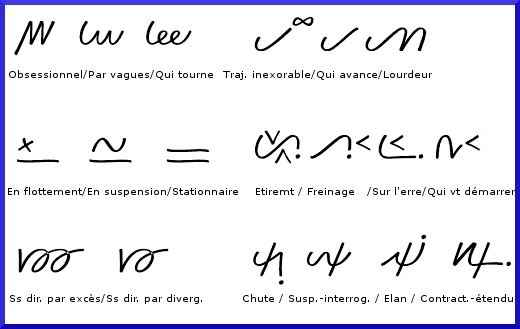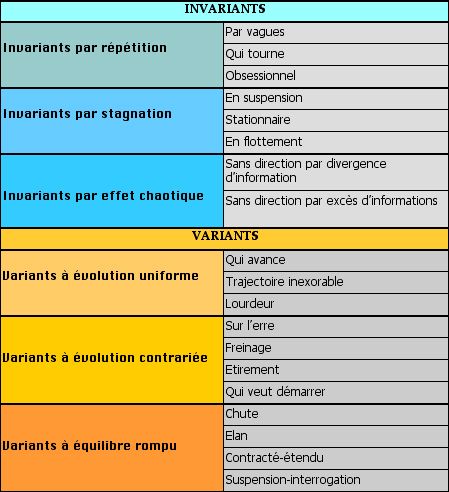liste des 19 UST
- Chute
- extr. 1 : H. Dutilleux, quatuor Ainsi la nuit
- extr. 2 : M. Ohana, Trois contes de l'honorable fleur
- Contracté-étendu
- extr. 1 : L. v. Beethoven, Trio des esprits
- extr. 2 : L. Prod'homme, Jeux/Thème/Temps
- Elan
- extr. 1 : W. A. Mozart, Symphonie N°32
- extr. 2 : D. Terruggi, Xatis
- En flottement
- extr. 1 : B. Parmegiani, Violostries
- extr. 2 : M. Redolfi, Pacific Tubular Waves
- En suspension
- extr. 1 : S. Rachmaninov, Concerto pour piano N°3
- extr. 2 : J.-C. Risset, Songes
- Etirement
- extr. 1 : C. Debussy, Prélude à l'après-midi d'un faune
- extr. 2 : P. Mabosc, Faisceau parallèle
- Freinage
- extr. 1 : M. Levinas, Froissement d'ailes
- extr. 2 : G. Reibel, Variations en étoile
- Lourdeur
extr. : Stravinsky, Le sacre du printemps
- Obsessionnel
- extr. 1 : T. Riley, In C
- extr. 2 : R. Yvanez, Sables
- Par vagues
- extr. 1 : F. Bayle, Les couleurs de la nuit
- extr. 2 : J. Barreau, Mouvements
- Qui avance
extr. : E. Chabrier, Scherzo valse
- Qui tourne
extr. : P. Schaeffer, Etude violette
- Qui veut démarrer
- extr. 1 : C. Debussy, La terrasse des audiences du clair de lune (prélude pour piano)
- extr. 2 : W. A. Mozart, Symphonie N°41
- Sans direction par divergence d'information
extr. : K. Stockhausen, Telemusik
- Sans direction par excès d'information
extr. : "Improvisation" (LP DG Avant-Garde 643541)
- Stationnaire
- extr. 1 : J. Barreau, Mouvements
- extr. 2 : M. Redolfi, Sunny afternoon at Bird Rock beach
- Sur l'erre
- extr. 1 : H. Fouad, Thaksim
- extr. 2 : R. Schumann, Arabeske
- Suspension-interrogation
- extr. 1 : C. Debussy, La terrasse des audiences du clair de lune (prélude pour piano)
- extr. 2 : P. Malbosc, Faisceau parallèle
- Trajectoire inexorable
- extr. 1 : M. Frémiot, ''Ballade pour piano"
- extr. 2 : K. Stockhausen, Telemusik




